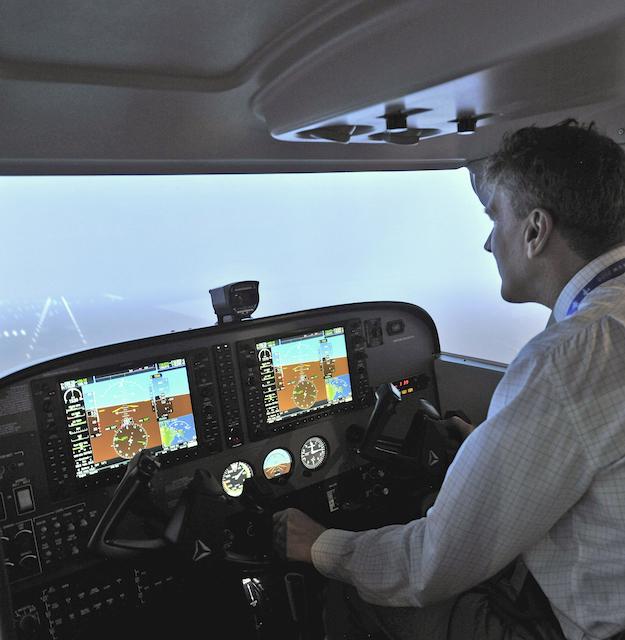Rider On the Storm: Our Man Flies Alsim’s Sim

It’s rare for an airshow to offer a chance to get into the cockpit and fly – so when we saw that Alsim had brought their AL172 simulator to Singapore, we sent along our resident flying instructor, Mark Wagner, to put the device through its paces:
My experience with simulators hasn’t always been good. Usually I’m the only real pilot among the group that’s trying them out, and I’m the only one to crash. So it’s with a little bit of trepidation that I seat myself in Alsim’s AL172 – a representative Cessna 172SP cockpit set inside the horseshoe curve of a 210 x 60-deg. panoramic screen – and complete the preflight checks before taking off from Bali Airport.
I’ve asked Alsim’s staff to throw the worst of the weather at me, and right on cue, lightning forks arrow down to the ground ahead of me as rain lashes down onto runway 27. There’s no sound and no vibration in the seat, but already the sensation is incredibly – surprisingly – realistic.
I’ve not flown the 172SP, which the sim is set up to replicate; most of my flying is in the 152 and 172N, analog cockpit version. The stick perhaps feels a little heavier than I’d expected, but that could just be a consequence of the real 172SP being heavier on the controls than the 1970s 172s. The main thing that immediately impresses me is how stable the flying experience is, and how quickly I forget that I’m on the ground at the Singapore Airshow. Within a few moments I really am immersed in the experience of flying circuits around Bali.
After a quick look at the stall characteristics, a very realistic benign stall at full power, and a hands-free trimmed 75 kt. climb – all as I’d have expected had I been flying the real aircraft – the Alsim engineer operating the instructor workstation to the rear of the simulator begins doing his best to spoil my day. As I line up an approach to runway 09 in the rain, I can feel the gusting crosswind and tailwind slapping in from 200 deg. After a touch-and-go I’m suddenly climbing through fog, and the disorientation I experience for a few agonizing moments is all too real, as I transition to fly on instruments in an unfamiliar cockpit for a moment.Back on the ground, I’m aware that I’ve failed to turn off the ignition; fortunately, simulated fuel costs a lot less than avgas. My first question on stepping out of the cockpit isn’t about the amazing visuals or Alsim’s in-house software that underpins the excellent flying experience, but to find out how much one costs. I just keep thinking of all those wet and windy weekends in Britain where we can’t get out flying, but would be able to get some useful hours in if we had one of these.

Comments